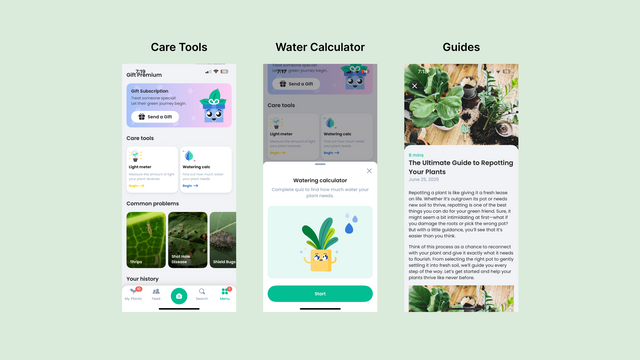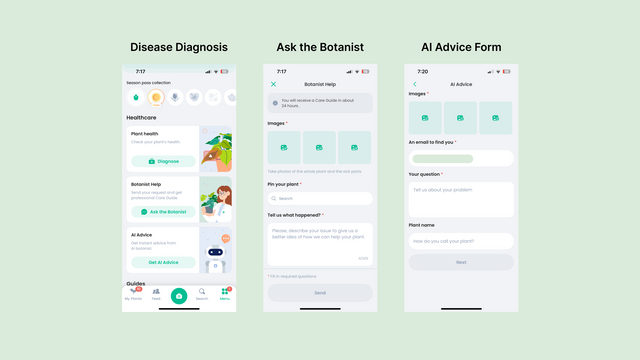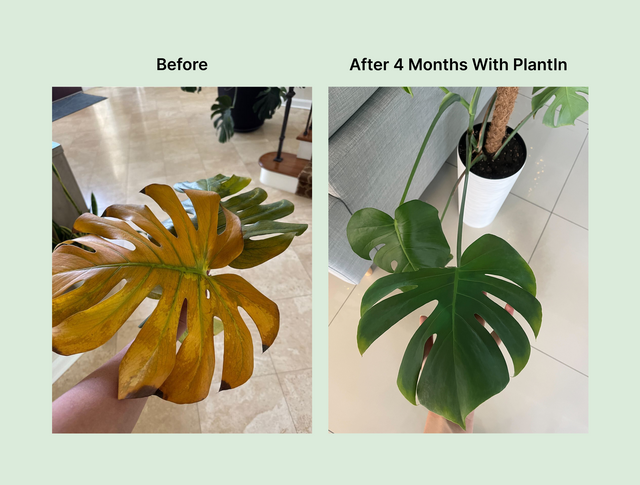My PlantIn App Review After Rescuing a Dying Plant
I thought I knew enough to keep a Monstera deliciosa alive. Big mistake. I’m not a total newbie, but definitely not a guru. I’ve managed to keep a few green friends alive over the years, but this particular situation had me stumped.
It all started with a single yellow leaf. Then another. Before long, my favorite plant was dropping leaves faster than I could read conflicting care guides online. Nothing seemed to help. After trying everything I could think of, I downloaded PlantIn out of desperation. So, this PlantIn app review covers my four-month journey bringing my favorite houseplant back from the brink.
Why I Decided to Try the PlantIn App
First, I tried the obvious stuff. Changed the watering schedule, moved it to different windows, and bought one of those soil moisture meters from Home Depot. Nothing worked. The yellowing got worse, and I started seeing brown spots creeping in.
I was getting genuinely frustrated. I liked this plant, and I’d had it for over a year with zero issues. Suddenly, it looked like it was heading for the compost bin. That’s when I found PlantIn while randomly scrolling Instagram.
What caught my attention was the disease diagnosis feature. Most plant care app reviews I’d read mentioned basic watering reminders, but PlantIn promised actual problem-solving with AI and real botanist advice. Since it was free to download, I figured, why not give it a shot? (I later realized the same tool is also available on their website, but at the time, I went straight for the app.)
What It Offers & What I Used Most
The app comes with quite a few tools, but I didn’t end up using everything (for now, at least). Some features were nice to have; others turned out to be genuinely helpful day‑to‑day.
Plant and Mushroom Identification
I tested this first out of curiosity. Snapped a pic of my pothos, my succulents, even some porcini mushrooms while grocery shopping. The results were quick and accurate. Definitely handy if you’re not sure what you’re dealing with, but that’s not what sold me.
The Care Tools They Offer
When I opened the app for the first time, I wasn’t thinking about fancy features – I just wanted to know what was killing my monstera. But as I started poking around, it turned out there was more in there than I expected. Not just a quick diagnosis, but tools to check light, track watering, reminders to keep me from forgetting, and guides that actually made sense.
- Light Meter: Turns out the “bright indirect light” in my living room wasn’t cutting it. Using the light meter, I realized my monstera needed to be much closer to the window than I thought. A simple move, but a significant improvement.
- Water Calculator: You enter the pot size, plant type, location, and even temperature, and it gives you a customized watering plan. It helped me break my habit of watering on autopilot and start watering based on what the plant actually needs.
- Pot Meter: I didn’t use this much, but it’s good to have. If you’re unsure about your pot size (or just forgot), this tool measures it using your phone. Handy when figuring out how much water to give, since the pot size affects everything.
- Guides: There’s a solid range, from beginner how-tos like watering and repotting, to more advanced topics like propagation or companion planting (those are in the paid tier). They’re visual and easy to follow.
- Reminders & Schedules: This one’s gold. Once you input your plant’s setup – pot size, light, location, soil, and so on – the app builds a care schedule with reminders for watering, fertilizing, misting, pruning, and repotting. It even adjusts seasonally, so you’re not overwatering in winter. You can also add your own schedule if you already know what works, and it’ll just remind you. Everything’s customizable, down to which tasks you want tracked. You can even see your completed tasks on a calendar.
All in all, these tools don’t do the work for you, but they do make it easier to stay consistent, which is really what most plants need. I didn’t expect to use so many of them, but once I did, they genuinely helped me understand my plants better.
Disease Diagnosis & AI/Botanist Advice
This was the feature that made me download the app in the first place – and it actually helped.
When my monstera started yellowing and drooping, I used the disease diagnosis tool. The app scanned a photo, suggested root rot or overwatering stress, and gave precise steps on what to do next.
Just to be sure, I used the Ask the Botanist feature right after. I added a few extra photos, answered questions about my care routine, and described what was going on. A day later, I got a reply confirming the diagnosis and a simple treatment plan tailored to my plant’s situation. It felt reassuring – like I wasn’t just guessing anymore.
How It Felt to Use Daily
Honestly? Surprisingly smooth. The app layout is clean, intuitive, and clearly designed with plant owners in mind. Nothing felt clunky or confusing, and the onboarding made it easy to get started. You can even customize the appearance (if you’re into that kind of thing, though it’s a paid extra), but even without it, the design feels well thought-out.
I really appreciated how you can organize your collection by spaces – like “living room,” “balcony,” or “office” – instead of dumping all your plants into one endless list. There’s also a wishlist feature for plants you’re eyeing but haven’t brought home yet, which felt like a subtle nudge to become a more thoughtful collector.
The reminders stood out too. They weren’t just dry commands like “water your monstera,” but friendly, plant-specific nudges that actually helped me stay consistent.
And I noticed a bunch of users posting before-and-after pics in the app’s community tab, which gave me a little hope. If they could revive crispy calatheas and sad pothos, maybe my monstera had a shot, too.
Does This Plant Care App Really Work?
It didn’t just help me save a plant. It helped me understand what went wrong. Through the diagnosis, I learned that I was basically drowning my monstera slowly. That, paired with poor drainage and less-than-ideal lighting, was a deadly combo.
With the AI tips and the botanist’s treatment advice, I got a clear, doable action plan. I trimmed off the dead leaves, cleaned the roots, switched to a chunkier soil mix, and stopped treating watering like an emotional coping mechanism.
And while every plant journey is different, seeing all the success stories in the community feed – and reading other PlantIn app reviews – really made it feel like I wasn’t figuring it all out alone.
PlantIn App Cost & Subscription Options
The app is free to download, but to unlock everything – like unlimited plant IDs and disease diagnosis, plus advanced tools like the light meter and water calculator – you’ll need a premium plan.
I chose the lifetime plan after the free trial, and it felt worth it pretty quickly. Compared to other apps I checked out, this one gave more value for what you pay.
There’s also a weekly option for $7.99 and some occasional discounts, so you don’t have to go all in right away. No sneaky charges either – everything’s laid out clearly.
After 4 Months: Did My Plant Look Any Better?
Slowly but surely, things got better. It wasn’t an overnight miracle, but the change was real. When I first downloaded PlantIn, my monstera looked sad: droopy stems, yellow leaves, and soggy soil. After getting a diagnosis and confirmation from the botanist, I followed the treatment plan step by step:
- Week 1: I trimmed off the dead leaves, repotted it with better-draining soil, and moved it closer to a brighter (but not too sunny) spot.
- Weeks 2–3: I let the roots recover, followed the watering recommendations (less often, more mindfully), and added a bit of support for the weak stems.
- Months 1–2: The yellowing stopped. New growth slowly started showing up – small leaves at first, but green and healthy.
- By Month 3: It looked like a different plant. The stems perked up, the new leaves had that signature monstera sheen, and I wasn’t constantly checking if it was dying.
Now? The plant looks alive, healthy, and – dare I say it – happy. I won’t pretend I’ve become a perfect plant parent overnight, but I’ve learned a lot. And honestly, seeing that progress a little at a time? Kinda made it all worth it.
And because words only go so far, here’s what my monstera actually looked like before and after four months of using the app:
PlantIn vs Other Apps I Tried
Before settling on PlantIn, I checked some other plant care apps I saw on the App Store. I tested a few popular ones, hoping to find something that felt helpful without draining my wallet. But most of them made me appreciate PlantIn even more.
PictureThis popped out a lot. It had a polished feel and solid reviews, but the price? Their two-year plan costs more than what I paid for PlantIn’s lifetime subscription. And honestly, I didn’t feel like I was getting that money’s worth.
Another app I tried was Planta. It wouldn’t let me try any real features unless I subscribed first. No trial, no previews – just a pricey paywall. The free version only had basic watering reminders, which didn’t help much with a dying plant, so I moved on.
Then there was Blossom. It looked okay at first, but once I saw the yearly fee was nearly $100 (without even a clear breakdown of what I’d get), it was a hard pass.
That’s what made PlantIn such a relief. It offered everything I actually needed – accurate IDs, plant disease help, expert advice, and smart care tools – for a one-time payment that didn’t make me flinch. Compared to what else is out there, it just made sense.
Would I Recommend This App?
If you’ve read this far into my PlantIn review, you probably already know where this is going: yeah, I would. But not because it’s perfect or because it’ll magically fix every plant problem overnight. It’s because it genuinely made the day-to-day part of plant care easier.
And honestly? For what I paid, it felt fair. Other apps wanted me to cough up a pricey subscription just to unlock basic tools, while PlantIn gave me everything I needed without feeling overpriced.
I’d sum it up like this: It didn’t just save my favorite plant; it made me feel like I finally knew what I was doing.
.png)


